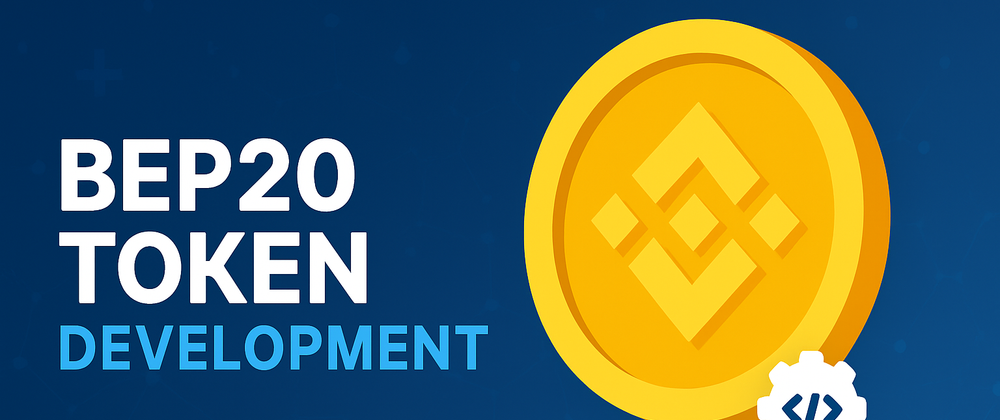The global cryptocurrency industry has grown from a niche financial experiment into a trillion-dollar market with limitless opportunities. From DeFi protocols and NFTs to play-to-earn games and decentralized applications, crypto tokens play a central role in this ecosystem. Among the various blockchain networks, Binance Smart Chain (BSC) has emerged as one of the most popular choices for token development, thanks to its speed, affordability, and scalability. If you’re an entrepreneur, investor, or startup looking to make your mark in crypto, building your own BEP20 token could be your gateway to success.
In this article, we’ll explore what BEP20 tokens are, why they are important, and how you can build your own token to enter the crypto market with confidence.
What is a BEP20 Token?
BEP20 is the token standard used on the Binance Smart Chain (BSC), similar to Ethereum’s ERC20 standard. It defines the rules and functions that tokens must follow to operate on the network. This standardization makes it easier for wallets, exchanges, and smart contracts to interact seamlessly with BEP20 tokens.
Key characteristics of BEP20 tokens include:
Compatibility: Fully compatible with ERC20, making them easy to adopt.
Faster transactions: BSC offers block times of just 3 seconds, far quicker than Ethereum’s.
Low fees: Transaction costs are significantly lower compared to Ethereum, a major advantage for both developers and users.
Interoperability: BEP20 tokens can be easily swapped between Binance Chain (BEP2) and Binance Smart Chain, enhancing liquidity.
Because of these benefits, BEP20 tokens have become a top choice for startups launching cryptocurrencies, decentralized apps, or fundraising campaigns.
Why Create a BEP20 Token?
Launching a BEP20 token is not just about joining the crypto hype—it provides real opportunities to innovate, raise capital, and build digital ecosystems. Here are some compelling reasons to create one:
Fundraising and Investment
Startups can raise money by selling their tokens in Initial Coin Offerings (ICOs), Initial DEX Offerings (IDOs), or Security Token Offerings (STOs). Investors purchase tokens in exchange for utility, profit-sharing, or governance rights.
Decentralized Applications(dApps)
BEP20 tokens can power dApps for gaming, lending, yield farming, and other DeFi activities.
Digital Ownership
You can tokenize assets such as real estate, artwork, or commodities, allowing fractional ownership and easy transferability.
Brand Expansion
A branded crypto token can strengthen your company’s identity, rewarding users with loyalty tokens, staking options, or governance rights.
Lower Costs & Faster Adoption
Thanks to BSC’s efficiency, your project can attract more users by offering cheaper and faster transactions compared to other blockchains.
Steps to Build Your BEP20 Token
Building a BEP20 token may sound highly technical, but with the right approach, it can be done smoothly. Below are the key steps:
1. Define Your Tokenomics
Before writing any code, outline your token’s purpose and mechanics. Decide:
- Total supply (e.g., 1 billion tokens).
- Distribution plan (team, investors, community rewards, reserves).
- Use cases (governance, payment, staking, or rewards).
- Burn or mint rules (will tokens be destroyed or created later?).
A clear tokenomics structure ensures long-term sustainability and investor trust.
2. Write the Smart Contract
The backbone of your BEP20 token is its smart contract, which defines how the token functions. This is typically written in Solidity, Ethereum’s programming language, which is also compatible with BSC.
The contract should include:
- Transfer and approval functions.
- Ownership and security mechanisms.
- Custom features (burning, minting, transaction fees, etc.)
If you’re not a developer, you can work with a crypto development company to create a secure and audited contract.
3. Test on the Binance Smart Chain Testnet
Before deploying your token on the mainnet, test it on the BSC Testnet. This helps ensure that the functions work as intended without risking real assets.
4. Deploy on the BSC Mainnet
Once testing is successful, you can deploy the token on the mainnet. You’ll need a small amount of BNB (Binance Coin) to pay for gas fees.
5. Verify and Publish Your Contract
After deployment, verify your contract on BscScan. This makes your token’s code transparent, boosting investor confidence and credibility.
6. Add Liquidity and List Your Token
For your token to gain value and usability:
- Add liquidity pools on decentralized exchanges (DEXs) like PancakeSwap.
- Apply for centralized exchange (CEX) listings once your project grows.
- Promote your token through marketing, partnerships, and community engagement.
The Future of BEP20 Tokens
As blockchain adoption accelerates, BEP20 tokens are expected to remain a major part of the crypto landscape. The rise of decentralized finance (DeFi), metaverse projects, and Web3 innovations will only increase demand for customizable, efficient, and low-cost tokens. By creating a BEP20 token today, you position yourself at the forefront of this transformation.
The crypto market offers endless opportunities for entrepreneurs and innovators. With Binance Smart Chain’s low fees, high performance, and wide adoption, BEP20 tokens provide the perfect launchpad for your project. Whether you’re raising funds, building a decentralized app, or offering digital ownership, creating your own token can open doors to a thriving ecosystem.
Building a token is just the first step—the real challenge lies in creating value, building a strong community, and ensuring long-term growth. With the right vision, planning, and execution, your BEP20 token could be the next big name in the crypto world.








Top comments (0)